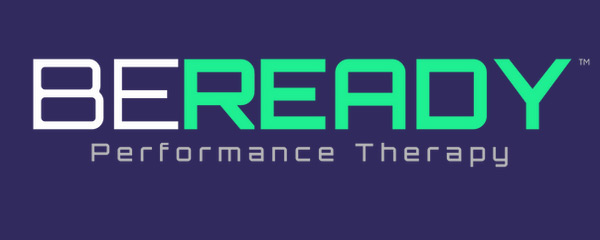In the realm of fitness and athletics, the journey to recovery from injury can be as demanding as the sport itself. Whether you’re a dedicated runner, cyclist, CrossFit enthusiast, or team sports player, the road back to peak performance requires careful attention and specialized care. While traditional in-network insurance outpatient physical therapy might seem like the default choice, there’s a compelling case to be made for considering a private direct-pay physical therapist. Let’s delve into why athletic individuals could benefit significantly from this alternative approach.
Tailored Attention and Specialized Expertise
One of the most significant advantages of private direct-pay physical therapy is the personalized attention and specialized expertise that athletes receive. Unlike in-network facilities where therapists may be stretched thin attending to multiple patients simultaneously, private practices often prioritize one-on-one sessions. This allows for a comprehensive assessment of the athlete’s condition and individualized treatment plans tailored to their specific sport and goals.
For instance, a runner recovering from a knee injury may require a rehabilitation program focused on improving biomechanics, strengthening specific muscle groups, and gradually reintroducing running drills. Similarly, a CrossFit athlete returning from shoulder impingement might benefit from targeted exercises to enhance shoulder stability and mobility, along with technique refinement for various functional movements.
Holistic Approach to Recovery
Athletic endeavors demand a holistic approach to recovery that goes beyond simply addressing the injury itself. Private direct-pay physical therapists often emphasize holistic care by considering factors such as biomechanics, nutrition, recovery strategies, and mental resilience. This comprehensive approach aims not only to alleviate pain and restore function but also to optimize performance and prevent future injuries.
For example, a cyclist rehabilitating from a lower back injury may benefit from a program that includes core strengthening exercises, flexibility work, bike fitting adjustments, and guidance on proper riding posture. Similarly, a soccer player recovering from an ankle sprain might receive proprioceptive training, agility drills, and advice on injury prevention strategies specific to soccer movements.
Faster Return to Sport
Athletes are inherently driven to return to their sport as quickly as possible, but rushing the rehabilitation process can lead to setbacks or re-injury. Private direct-pay physical therapy offers the advantage of focused attention and flexibility in scheduling, enabling athletes to progress at their own pace under close supervision. This individualized approach often translates to a faster and more efficient return to sport compared to the standardized protocols typical of in-network facilities.
For instance, a volleyball player rehabbing from a shoulder injury may benefit from a customized program that integrates sport-specific movements, such as serving, spiking, and blocking, into the rehabilitation process. By simulating the demands of volleyball and gradually increasing intensity, the athlete can regain confidence and skill while minimizing the risk of recurrence.
Long-Term Performance Enhancement

Beyond injury rehabilitation, private direct-pay physical therapists can play a vital role in optimizing long-term athletic performance. By addressing underlying imbalances, movement dysfunctions, and biomechanical inefficiencies, these professionals help athletes unlock their full potential and minimize the risk of future injuries.
For example, a football player seeking to improve speed and agility may undergo a comprehensive movement analysis to identify areas for improvement. Through targeted exercises, corrective drills, and performance enhancement techniques, the athlete can enhance athleticism, resilience, and overall performance on the field.
Cost and Time Effectiveness
In addition to the personalized care and specialized expertise offered by private direct-pay physical therapy, there are significant cost and time-saving benefits that appeal to athletic individuals. While it may seem counterintuitive at first, opting for private pay can often lead to more cost-effective solutions in the long run, especially for athletes with high insurance deductibles or those requiring extended rehabilitation.
Many insurance plans come with substantial deductibles that patients must meet before coverage kicks in. For athletes undergoing physical therapy, this means bearing the full brunt of the cost for numerous sessions until their deductible is met, which can be financially burdensome. On the other hand, private direct-pay physical therapy typically offers transparent pricing structures and may even provide discounted package deals for multiple sessions, eliminating the uncertainty and potential high out-of-pocket expenses associated with insurance deductibles.
Moreover, in-network clinics often adhere to standardized treatment protocols that may involve a higher number of visits than necessary. While these protocols are designed with good intentions, they can result in prolonged treatment durations, leading to increased co-pays, time commitments, and disruptions to an athlete’s training schedule or competition calendar.
Private direct-pay physical therapists, however, prioritize efficiency and effectiveness, aiming to achieve optimal outcomes in fewer sessions whenever possible. By focusing on individualized treatment plans and closely monitoring progress, these therapists empower athletes to make significant strides in their recovery without unnecessarily prolonged therapy sessions. This streamlined approach not only saves athletes time but also minimizes the financial strain associated with multiple co-pays and missed work or training opportunities.
In essence, the upfront investment in private direct-pay physical therapy can yield substantial returns in terms of both cost savings and time efficiency, making it a compelling choice for athletic individuals seeking expedited rehabilitation and enhanced performance outcomes. By prioritizing quality over quantity and tailoring treatment plans to meet the unique needs of each athlete, private practices offer a more targeted and cost-effective alternative to traditional in-network insurance outpatient physical therapy.
Conclusion
For athletic individuals striving to excel in their chosen pursuits, the decision to seek private direct-pay physical therapy can be a game-changer. By prioritizing personalized attention, specialized expertise, holistic care, and individualized rehabilitation plans, these practices empower athletes to overcome injuries, optimize performance, and pursue their athletic goals with confidence and resilience. While in-network insurance outpatient physical therapy certainly has its place, the benefits of the private direct-pay model are undeniable for those committed to reaching new heights in their fitness journey.


